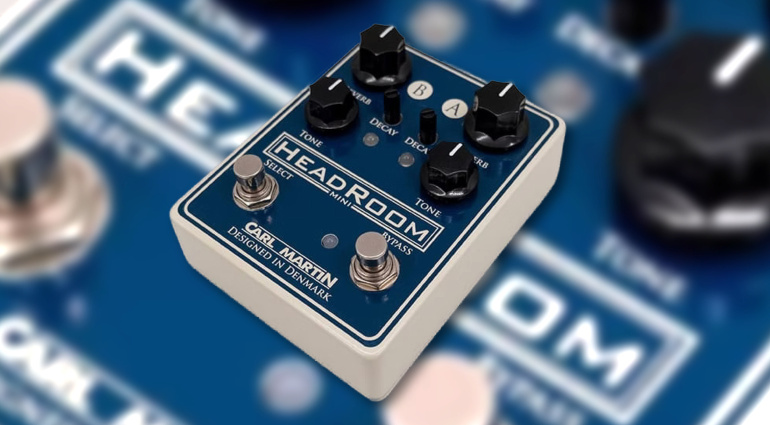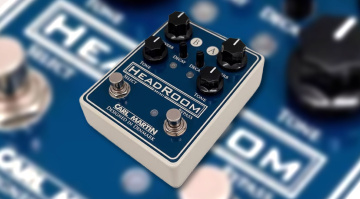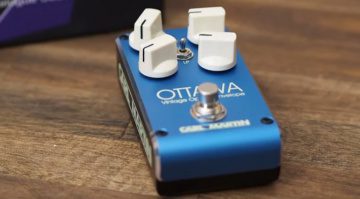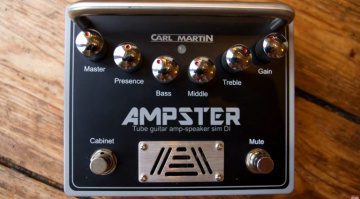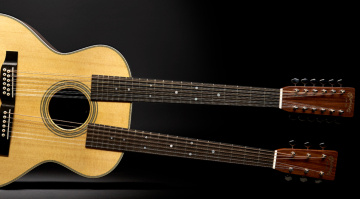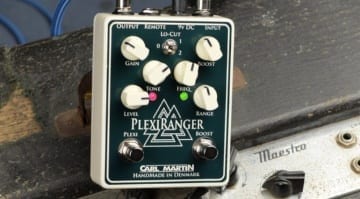Carl Martin HeadRoom Mini: Honey, I Shrunk The Spring Reverb!
Two channels, 50s sound - smaller size.
The original HeadRoom by Carl Martin turned heads in 2016: a giant, real spring reverb pedal with a vintage look at a very affordable price. With the HeadRoom Mini, the Danes go with the times and shrink the effect. A real spring reverb becomes a digitally emulated one. Much of the original remains.
HeadRoom Mini: From maxi to mini
Three springs, chicken-head knobs, two reverb channels – the original HeadRoom made a splash in 2016 at an affordable price for a spring reverb pedal. And it sounded great. But looking at the effect from today’s perspective of overcrowded pedal boards and the growing prevalence of stereo signal flow, it seems a bit out of date.
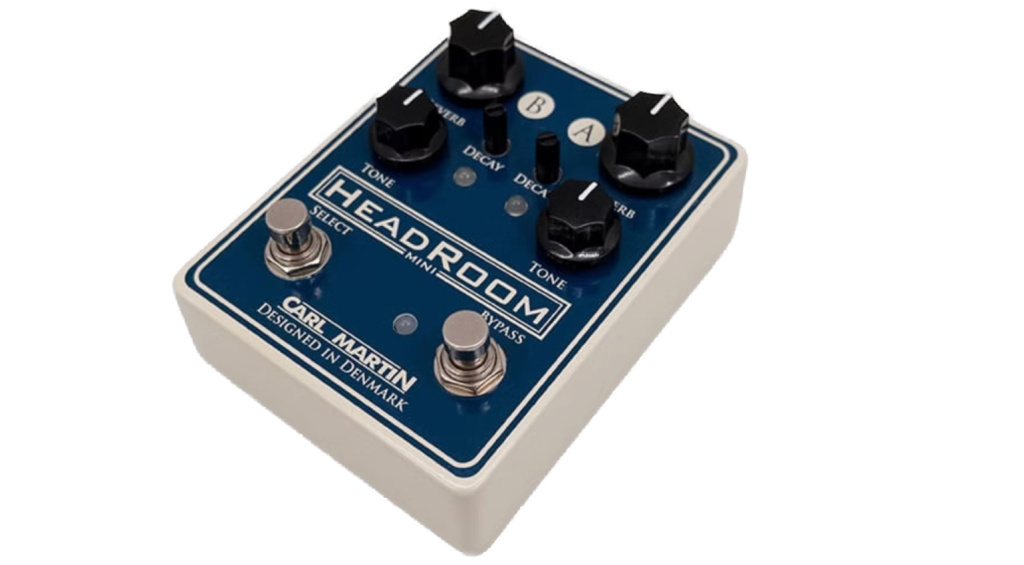
With spring reverb, you run into a problem when you try to shrink the pedal. This is because the spiral springs need a certain length to achieve the correct vibration behavior. At Carl Martin, we have digitally emulated the sound of the original, so you can go from maxi to mini. The basic idea of offering two reverb channels with different settings has been retained in the HeadRoom Mini.
Two Channels
Like the original, the HeadRoom Mini’s workflow is simple. The pedal offers two reverb channels, each with entirely different reverb settings. Each channel offers controls for Reverb (called Level in the original) for the effect portion and Tone with an LP/HP filter to shape the reverb’s tonality.
Another advantage of digital emulation is the ability to adjust the reverb time thirough the decay knob. That would not possible with pure analog spring reverbs, where the dynamics of the input signal and the length of the spiral springs determine how long the reverb fades out. You can switch between the two channels using the select footswitch.
The effect itself is activated via the second footswitch bypass. The HeadRoom Mini also features buffered bypass, which ensures little signal loss, even with longer cable lengths. This comes in handy when the effect is in a rack and not on stage.
Dual Mono
Carl Martin not only keeps up with the times when it comes to digital emulation and compact pedal size. Stereo signal flow is now part of most reverb pedal. And the HeadRoom Mini offers (kind of) this on both its input and output, if you use a TRS cable.
This way, from the output, it is possible to send the reverberated signal to two amps for an even bigger sound. Strictly speaking, and this is how Carl Martin describe it, this is a dual mono signal flow, not true stereo.
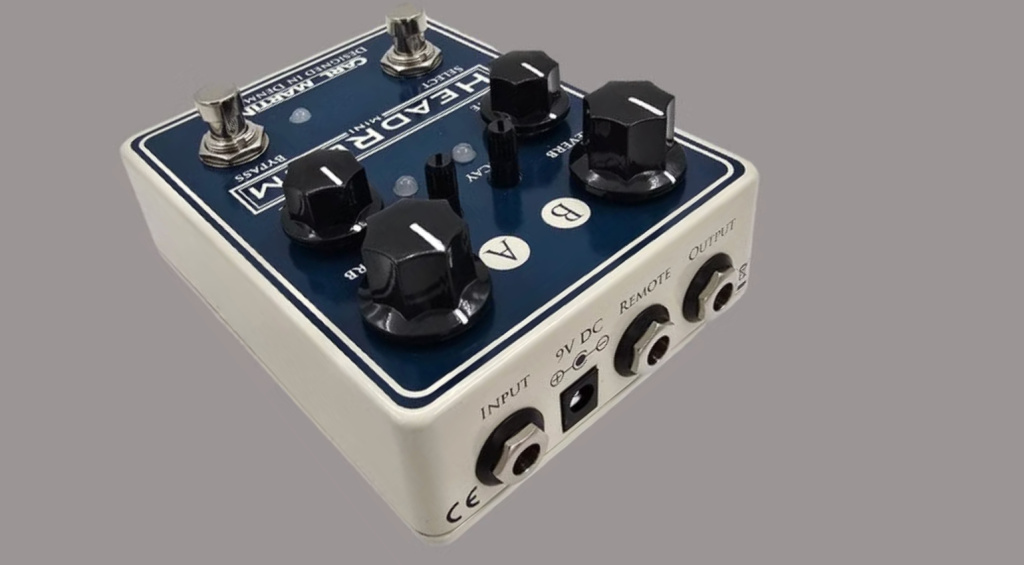
With the pedal’s two settings, the remote functionality may not be the most important selling point. However, if you use the pedal in a rack and want to switch between the two channels or activate the effect from further away, you can do so via the remote input.
How Much Does The Carl Martin HeadRoom Mini Cost?
The Carl Martin HeadRoom Mini reverb pedal costs 279 euros at Thomann*.


Infos über das neue Pedal von Carl Martin
*Disclaimer: This post contains affiliate links and/or widgets. When you buy a product via our affiliate partner, we receive a small commission that helps support what we do. Don’t worry, you pay the same price. Thanks for your support!
 3,6 / 5,0 |
3,6 / 5,0 | 